Fall Photojournal
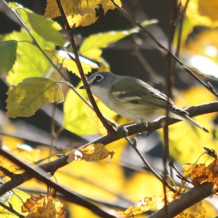
Every season is beautiful in Glen Providence Park– but Fall is just magical! After our first year of monthly photojournals, we will continue with quarterly ones- following meteorological seasons, so our Fall photojournal is September through November. We continue to work on identifying species of all kinds, with generous help from experts and from our knowledgeable facebook fans and nature walk guides!
At our August Nature Walk, Tom Reeves taught us about two intriguing species that are dependent on the American Beech (which is so abundant along the eastern hill), both of which we saw a lot of in the Fall! The parasitic but harmless Beech-drop, Epifagus americana, grows in the roots of beeches and it blooms in the fall- and it is Tom’s favorite plant! Beech blight aphids are fluffy little insects that remind us of Seuss’ truffula trees– they feed on the sap of the beech, and they are hysterical to watch. There are even videos on YouTube– the Beech blight aphids look like they are dancing! If you noticed gray spots on the ground that looked like ash, that is mold that grows under colonies of the aphids.
Amphibians and reptiles could still be found in October- we were excited to spot our first Wood Frog in the park! It breeds in vernal pools- you can hear its call here. Of course we frequently see the Common Garter Snake, but it was interesting to get a good look at how deeply their tongues were forked! According to wikipedia, a forked tongue allows reptiles to sense the direction of a smell.
Insect indentifications included Sawfly larvae on one of the River Birches we planted- as identified by BAMONA, Butterflies and Moths of North America. They looked like a buffet for birds! Facebook fans identified a very fuzzy caterpillar we spotted by the pond as a Lined Ruby Tiger Moth, Phragmatobia lineata.
Another facebook fan identified both the black mushroom “Earth tongue”, and some delicate, ephemeral white mushrooms that look like flowers– likely a species of marasmius.
For several weeks you could find the fruit of the intriguing native Osage orange, Maclura pomifera, on the ground along the Sledding Hill- this odd-looking fruit measures about 5″ across, and can weigh over 1 pound! According to wikipedia, the fruit was once used to repel spiders by placing one under the bed, and one study found its extract elemol to be as effective a mosquito repellant as DEET!
Like last year, we began to see more White-tailed deer in the fall. I spotted this doe and fawn the day that several deer in the park were being oddly tame- I came across one napping on the Shingle Mill Trail, and after initially bounding off, each deer stood watching me from afar- and eventually they actually ignored me as I hiked around the park.
We were incredibly lucky that there was not more damage to Glen Providence Park from Hurricane Sandy just before Halloween- several trees fell and the pond level was very high, but the erosion and damage was nothing like that from Hurricane Irene in 2011.
As the leaves fell, the beauty of the park’s topography was revealed. Now it just needs a covering of snow….
Click on any photo for a closer look, and you can scroll through the photos for a virtual tour. And remember we’re always adding to the photo albums on facebook!
- 9/7 Beech-drops in bloom
- 9/26 “Earth tongue” fungus
- 9/26 Beech blight aphids
- 9/28 Sawfly larvae on River Birch
- 9/28 Wood frog
- 10/5 Ephemeral mushroom “flowers”
- 10/11Lined Ruby Tiger Moth
- 10/11 Common Garter snake with forked tongue
- 10/18 Osage orange
- 10/22 October treetops
- 10/22 Blue-headed Vireo
- 10/24 Common Grackle & Sassafras
- 10/25 White-tailed doe & fawn
- 10/25 Looking up Mountain Laurel Trail
- 10/30 High water at pond after Hurricane Sandy
- 11/12 Squirrel with nut
- 11/16 Mallards
- 11/28 View down Mountain Laurel Trail

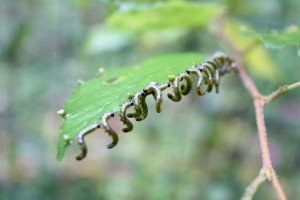
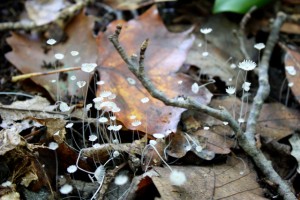
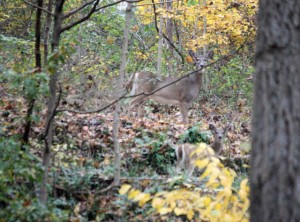
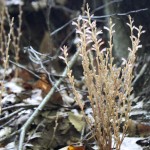

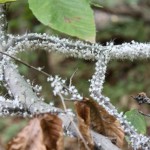
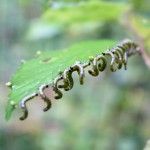
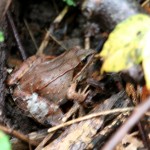
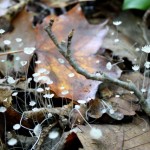
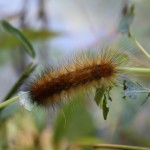
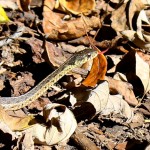

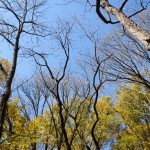
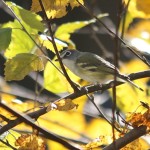
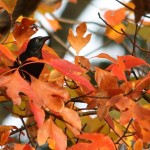
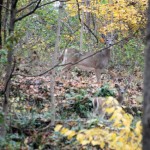
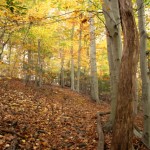
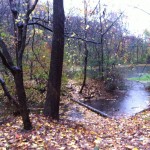
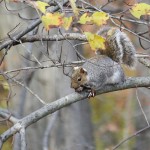
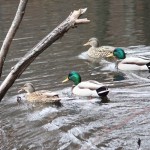
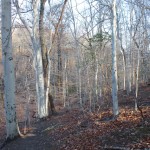









Recent Comments